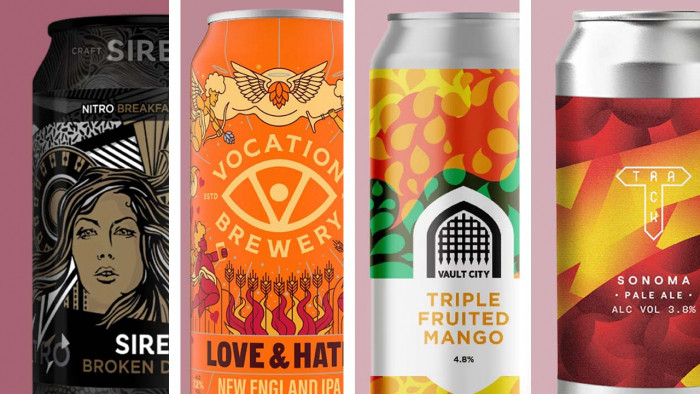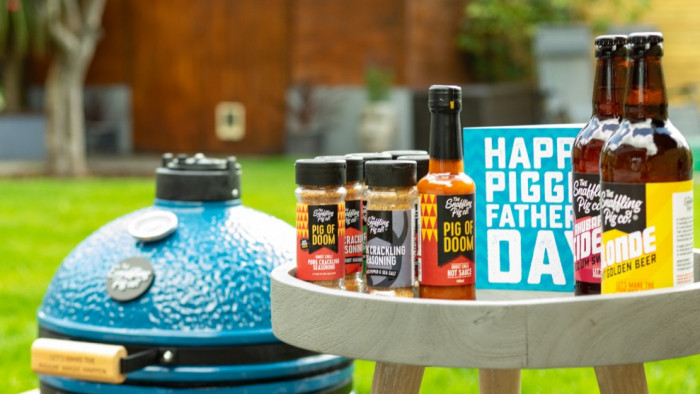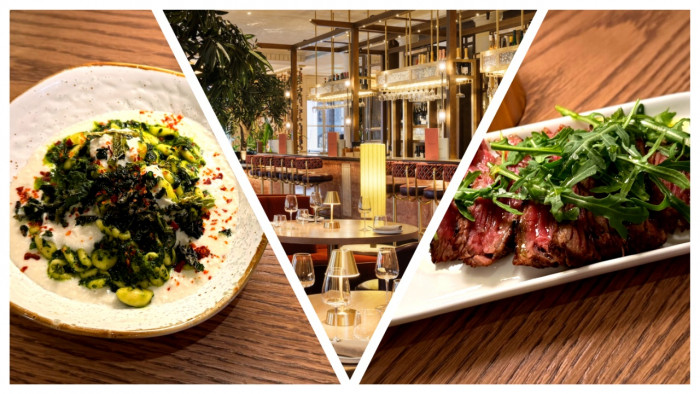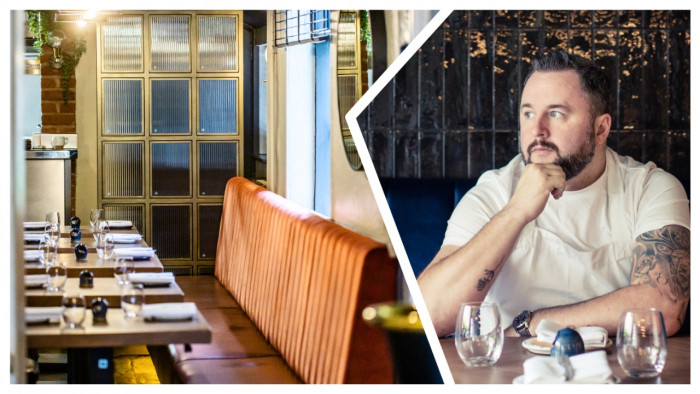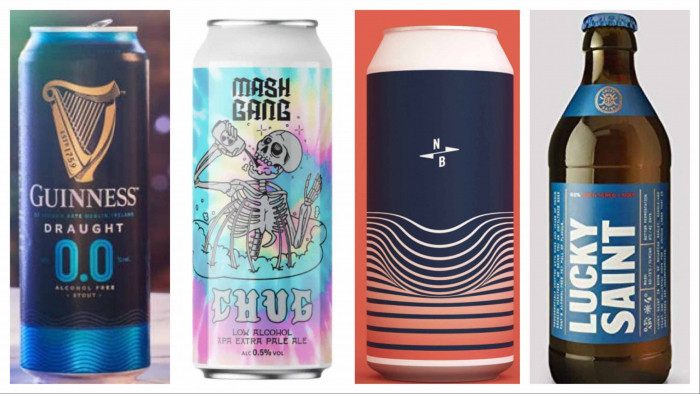How to buy ridiculously posh food and drink - without looking stupid
A pro’s guide to walking away with lobster, champagne, venison and more with your reputation still worth a damn


Think of all the things you’ve not done in life because of your fear - your absolute terror - of looking like a bit of a dick. Sticking your hand up in class to answer a simple maths question. Talking to the pretty lady you always see in the queue for your morning coffee. Asking your boss for a raise. Wearing a roll-neck. Growing your hair. Shaving your hair. Starting your Kickstarter for inflatable headphones. Asking a professional to fix your leaking sink. Going back into Tesco to dispute why and how the bag of potatoes you just bought cost you 11 quid. SO MANY THINGS. So many daring, cool, risky, outrageous, beneficial, stupid and fun things you’ve deprived yourself of, all because someone in a classroom/coffeeshop/workspace/wherever who you’ll never see again and do not care for might, for a second, think you’re a bit of a prat.
You know what that rubbish anxiety is not going to stop you from doing from here on in? Eating lobster and drinking champagne and shaving straight kilograms of raw truffle into your mouth for breakfast. Absolutely piling raw oysters into your mouth like really fat gross French duke. Eating venison until you black-out on your sofa. Because this is a feature that will chew up and spit out the very real worry that comes with trying to buy very posh foodstuffs and boozestuffs. The inexplicable and unnecessary worry that you’ll possibly come across as a clueless dipshit instead of an expert in the diet staples of the Russian oligarchs and Saudi princes.
Here’s how. We’ve turned to eight really great food and drink authorities to teach us exactly what to do and what to say when buying opulent fillet steaks, outrageously expensive whiskies, gloriously stinky truffles, and more extraordinary meal-time luxuries. All you need to do is follow their tips the next time you find yourself in a superbly posh shop, and you’ll walk out not only with bags filled the very best produce your money can buy, but feeling like you damn well own the place too…
How to buy… fillet steak

Richard H Turner, all-round meat lord from Meatopia, Hawksmoor, Turner and George, Blacklock and Pitt Que, on the king of all the beef cuts
1. “Ask questions. Ask a lot of questions. Ask what breed the animal was, where it was farmed, what it ate, how old it was at slaughter, how long the meat was hung for, whether or not they’ve tasted it already. Not only are you getting a really in-depth backstory and a range of quality indicators for your meat, but if your butcher struggles to answer these simple questions I would suggest shopping elsewhere.”
2. “Once you’re happy, look at the fillet. It should be dry not wet, deep red not pink, and while a little marbling is good, too much is a sign of fast weight gain and possible intensive feeding, both of which will really effect your flavour.”
3. “Whatever you do, don’t buy anything that’s been wrapped in plastic. Meat should never be wrapped in plastic – it taints the flavour, is likely to suck out the juices if it’s been vacuum-packed, and will stop you from being able to smell the sweet and pleasant scent that means it’s a good piece of meat.”
Champagne

Bluff your way to fizz greatness with Colin Thorne, wine buyer at Vagabond Wines
1. “Forget all the big brand names you know. My tip would be to have a look online at wine lists in your favourite restaurants and wine bars - there’s plenty of under-the-radar producer names that will crop up again and again. Consider it the vote of confidence you need to move away from the major players and ask for them in your wine shop.”
2. “Ask your server this question: ‘What’s the most exciting champagne you’ve tried recently?’ Though Dom Perignon, Krug and Cristal are undoubtedly well-made wines, the real buzz these days is for wines made by individuals who have decided to take control of their own production rather than selling grapes to the champagne big players.”
3. “Look for mentions of single villages or vineyards on the label. You’ll win the heart of any decent wine retailer or sommelier the moment you start asking about the place of origin. Healthy, self-sustaining vineyards are the most important factor in making quality wines.”
Truffles

Know your dirty balls of decadence with Nick Weston, founder and director of wild food and adventure specialists Hunter Gather Cook
1. “Sniff out the strong aroma. UK truffles aren’t as punchy as their European counterparts, but a sweet, nutty scent with earthy overtones should be very evident. Sellers will keep the truffles in jars, so before buying one, make sure you take it out and put it in your palm to smell it. Just sniffing the container won’t give you an accurate indication, as collectively they will let off a stronger scent.”
2. “Whilst it’s in your palm, make sure it feels firm and weighty. This tells you that it’s fresh, it’s ripe, and that it still contains a good amount of moisture. Any kind of give when pressed is a sign that the truffle is old or over mature, and therefore not worth using.”
3. “When you slice a truffle at optimum ripeness, the ‘gleba’ (the inside) should be dark brown with strong irregular white lines squiggling all over the place. If it’s really pale on the inside, the truffle is underripe and not much use to anyone. Sure, not many truffle dealers will let you slice one open before you buy it, so consider that the UK truffle season typically peaks in October and November.”
Venison

Top-tier raw deer intel from Andy Waugh, founder of Mac & Wild
1. “I spend my life frowning at venison packaging and labels - all too often they only say ‘venison’. That’s like saying, ‘here’s a packet of meat’. Not only do we have six different deer species in the UK, all of massively different sizes and habitats, but there are a whole range of cuts on offer that are good for very different cooking techniques. Get to know the cuts then ask for one in particular based on how you want to cook it. Go for shoulder, neck, shanks, shins, or ossobuco if you’re slow cooking, or tenderloin, haunch or striploin (which is the most sought-after and expensive cut) if you want steaks.”
2. “All too often I hear people saying they don’t like it because it’s gamey. Venison meat isn’t gamey. If your venison tastes sour, it’s because it wasn’t handled properly (not refrigerated or hung in the right conditions). And if it smells musky, don’t buy it.”
3. “Avoid buying red deer stag meat in October. This is the time of year when they ‘rut’, and the male stags stop eating and release a hormone that turns their fur black and makes them smell irresistible to females. This hormone also flavours the meat, and is mostly undesirable, although some people really like it. A good butcher should be able to tell you when the beast was shot.”
Whisky

Mickael Perron, manager at The Library Bar at The Lanesborough in Knightsbridge, schools you in serious scotch
1. “If you’re about to spend a lot on a whisky, find a retailer that will allow you to taste before you buy. The best shops will agree that the most important factor in you buying your bottle is your taste, which is why we offer the customer 25ml servings of some of our finest drams before they potentially part with a lot of money.”
2. “I would always suggest you buy in threes – one bottle to drink with friends, one to enjoy on your own, and one to keep as an investment. Of course, that’s three times the price, but with the right bottle, you could sell it later and make back your money.”
3. “A little homework can go a long way. Ask about the release history of any distilleries that you might be interested in. For example, someone interested in The Balvenie will notice that traditionally, the first expression they release tends to go on to be a classic. With that in mind, their Peat Week 2002, which currently retails for around £60, could be a very shrewd purchase now, and go on to be worth a lot more in ten years… if you can resist drinking it.”
Lobster

Pic: David Loftus
Snap up a tasty sea beast with Bart van Olphen, Jamie Oliver’s Food Tube fish expert and author of Bart’s Fish Tales: A Fishing Adventure in Over 100 Recipes
1. “Like every fish, it’s hugely important to make sure your lobster has been caught in a sustainable way, so ask where it was caught. You want it to be MSC-certified, meaning it’s certified sustainable. They can be found in all oceans, but I prefer to eat European lobster. I find the meat to be tender, and slightly sweet.”
2. “You also need to buy your lobster alive. When you pick it up, it should be moving its claws and tail. That way, you know it’s fresh. A lobster that’s been kept in a tank for too long without any food will eat itself from the inside, and will visually appear very weak. You don’t want that. And you don’t want the shell to be cracked or broken in any way.”
3. “Always buy one big one rather than two small ones. First, it’s much nicer to share a lobster with your partner, secondly it’s far more lobster-friendly to not eat the younger ones, and finally, larger lobster mean less difficulty in getting the meat out of the claws, so expect less waste.”
French Duck Foie Gras

Spotting the proper stuff with Alain Lamaison, Michelin-winning head chef at Hotel Château de la Messardière in Saint-Tropez, France
1. “Firstly, be aware that there are several qualities of foie gras. When looking for the finest foie gras, I’m looking for Extra Quality Label Rouge – this is used in the best foie gras terrines and should be steamed or poached. After that, you have Second Quality Label Rouge, followed by First Quality Choice and finally Quality B, which should only be used for stuffing, or in pates and mousses. It’s important to know what you’re going to use your foie gras before buying it.”
2. “Look for foie gras packaged in paper – the extra-fresh product can only be on sale up to 72 hours after slaughter, otherwise it will be vacuum packed. Plastic wrapping will also stop you from being able to feel the product for quality. It should be soft to the touch.”
3. “Finally, take into account the colour and scent and appearance. Are both lobes attached? Is the skin stretched without any stains or blood impacts? And is it a light bright beige with a fresh scent of corn and hazelnuts? If you can answer yes to all three, you’re holding a great product.”
Oysters

Make sure you’re slurping up the best bivalve big boys with these tips from Josh Levy, head chef of seafood restaurant Claw Carnaby
1. “Buying the best and tastiest means picking the freshest, so the first thing to do is ask your fishmonger for the date his oysters were picked. They shouldn’t be any more than two days old, and as local as possible - the very best spots for oysters are Essex (including Maldon and Colchester) Whitby, Whitstable and Falmouth. Also, buy in oyster season. British natives are most plentiful in autumn through winter, and this is when you want to be eating them.”
2. “Like wine, finding your favourite oyster variety is an experimental process - they vary in texture and salinity, so depending on the type, they can be salty, fresh, plump and punchy. If you’re still not sure what your favourite variety is, tell your fishmonger what you want from your oyster so they can select you the most fitting species.”
3. “Obviously, a bad oyster is bad news. You want these guys alive! If it’s dry or smells strongly of fish, get rid of it. It’s probably dead. Live and healthy oysters are juicy, plump, have their shells in good condition and smell refreshingly of the sea.”
Latest
Related Reviews and Shortlists

